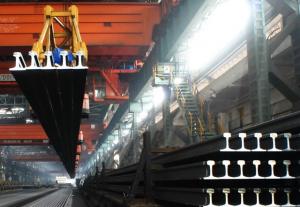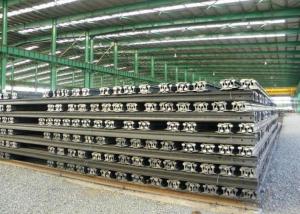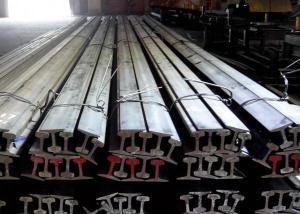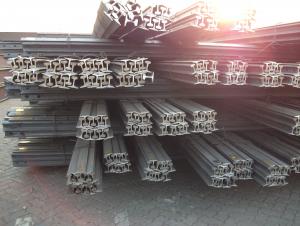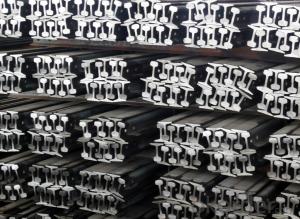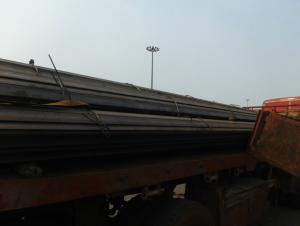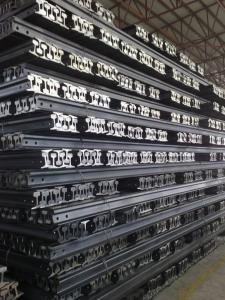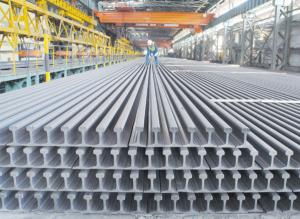Light Steel Rail GB 9kg GB12kg GB15kg with High Quality
- Loading Port:
- China main port
- Payment Terms:
- TT or LC
- Min Order Qty:
- 25 m.t.
- Supply Capability:
- 100000 m.t./month
OKorder Service Pledge
OKorder Financial Service
You Might Also Like
Product Description of Light Steel Rail GB 9kg GB12kg GB15kg with High Quality:
Sizes: 38kg, 43kg, 45kg, 50kg, 60kg.
Production Standard: GB2585-81, DIN, AREMA, JIS, BS, UIC, etc.
Material: 50MN, U71MN, 900A, 110A, etc.
Length: 6m-25m according to the requriements of the clients
Alloy No | Grade | Element(%) | ||||
C | Mn | S | P | Si | ||
Q235 | B | 0.12—0.20 | 0.3—0.7 | ≤0.045 | ≤0.045 | ≤0.3 |
Usages of Light Steel Rail GB 9kg GB12kg GB15kg with High Quality:
Light rail is mainly used in forest region, mines, factories and construction sites laid of the place such as temporary transport line and light motorcycles with line. Be widely used for railway, subway, transportation track, express, curve way, tunnel way and so on.
Packaging & Delivery of Light Steel Rail GB 9kg GB12kg GB15kg with High Quality:
1. Packing: it is nude packed in bundles by steel wire rod
2. Bundle weight: not more than 3.5MT for bulk vessel; less than 3 MT for container load
3. Marks:
Color marking: There will be color marking on both end of the bundle for the cargo delivered by bulk vessel. That makes it easily to distinguish at the destination port.
Tag mark: there will be tag mark tied up on the bundles. The information usually including supplier logo and name, product name, made in China, shipping marks and other information request by the customer.
If loading by container the marking is not needed, but we will prepare it as customer request.
4. Transportation: the goods are delivered by truck from mill to loading port, the maximum quantity can be loaded is around 40MTs by each truck. If the order quantity cannot reach the full truck loaded, the transportation cost per ton will be little higher than full load.
5. Delivered by container or bulk vessel
6. Delivery Time: All the Hot Rolled Steel Rail will be transpoted at the port of Tianjin, China within 30 days after receiving the advance payment by T/T or the orginal L/C at sight.
Inspection of Light Steel Rail GB 9kg GB12kg GB15kg with High Quality:
We will send the MTC of the factory to the clients dirrectly which contain the anlisis of the heat, chemiqul composition, phisical characteristicas, etc.
And our inspectors will arrive at the factory to meke the inspection of the size, length, weight and quantity before the transportation from the factory.
FAQ:
Q1: How soon can we receive the product after purchase?
A1: Within three days of placing an order, we will begin production. The specific shipping date is dependent upon international and government factors, but is typically 7 to 10 workdays.
Q2: Can stainless steel rust?
A2: Stainless does not "rust" as you think of regular steel rusting with a red oxide on the surface that flakes off. If you see red rust it is probably due to some iron particles that have contaminated the surface of the stainless steel and it is these iron particles that are rusting. Look at the source of the rusting and see if you can remove it from the surface.
Q3: Why buy Materials & Equipment from OKorder.com?
A3: All products offered by OKorder.com are carefully selected from China's most reliable manufacturing enterprises. Through its ISO certifications, OKorder.com adheres to the highest standards and a commitment to supply chain safety and customer satisfaction.
Images:

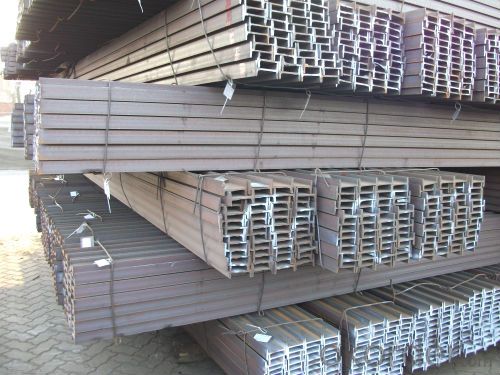
- Q:What are the safety precautions taken during steel rail welding?
- To ensure the safety of workers during steel rail welding and prevent accidents and injuries, various safety precautions are taken. Some of the important safety measures implemented during this process are: 1. Personal Protective Equipment (PPE): Workers are supplied with and must wear appropriate PPE, including welding helmets, safety glasses, flame-resistant clothing, gloves, and steel-toed boots. This protective gear helps protect against sparks, heat, UV radiation, and potential injuries. 2. Ventilation: It is crucial to have sufficient ventilation to remove fumes, gases, and smoke generated during welding. Adequate ventilation systems, such as exhaust fans or local exhaust ventilation, are installed to maintain a safe and breathable work environment. 3. Fire Prevention: Welding produces intense heat, sparks, and molten metal, creating a high risk of fire. To minimize this risk, fire extinguishers, fire blankets, and fire-resistant barriers are readily available and regularly checked. Additionally, all flammable materials are removed from the welding area. 4. Welding Screens and Curtains: Flame-resistant screens or curtains are used to create barriers and protect nearby workers from harmful radiation, sparks, and potential eye injuries. 5. Grounding and Isolation: Proper grounding of welding equipment and isolation from nearby flammable materials are crucial to prevent electrical shocks and fires. This is achieved by connecting the welding machine to a grounded power source and ensuring all cables and connections are insulated and in good condition. 6. Training and Certification: Welders must undergo comprehensive training and obtain relevant certifications to ensure they are skilled in safe welding practices. They are trained to identify hazards, handle equipment safely, and respond appropriately to emergencies. 7. Regular Equipment Maintenance: Welding equipment is regularly inspected, maintained, and serviced to ensure safe and efficient operation. Any damaged or faulty equipment is promptly repaired or replaced to prevent accidents. 8. Risk Assessment and Job Planning: Before starting any welding work, a thorough risk assessment is conducted to identify potential hazards and determine appropriate safety measures. Adequate job planning includes considering factors such as weather conditions, visibility, and the presence of other workers. By implementing these safety precautions, the risks associated with steel rail welding can be minimized, creating a safer working environment for welders and reducing the likelihood of accidents and injuries.
- Q:How do steel rails contribute to energy efficiency in trains?
- Steel rails contribute to energy efficiency in trains in several ways. Firstly, steel rails provide a smooth and stable surface for the train to run on, reducing friction between the wheels and the tracks. This minimizes energy loss and allows the train to maintain higher speeds with less effort. Additionally, steel rails are durable and require minimal maintenance, ensuring that the train can operate efficiently over long distances without interruptions or delays. This reduces the overall energy consumption of the train system by minimizing downtime and the need for frequent repairs. Furthermore, steel rails offer excellent weight-bearing capabilities, allowing trains to carry heavier loads. By distributing the weight evenly along the tracks, steel rails help optimize the train's energy consumption by reducing strain on the locomotive and allowing for more efficient power distribution. In summary, steel rails play a crucial role in enhancing energy efficiency in trains by reducing friction, enabling smooth operation, minimizing maintenance needs, and supporting heavier loads.
- Q:How are steel rails protected against vandalism and theft?
- Steel rails are typically protected against vandalism and theft through various security measures. These measures may include surveillance cameras, fencing, and security patrols in high-risk areas. Additionally, some railroads use anti-theft devices such as track circuitry, which triggers an alarm if a rail is tampered with or removed. Regular inspections and maintenance also help identify and address any potential vulnerabilities.
- Q:How do steel rails handle changes in track alignment due to track settlement and longitudinal movement?
- Steel rails are designed to handle changes in track alignment caused by track settlement and longitudinal movement by being flexible and durable. The rails are securely fastened to the sleepers or ties, allowing them to adjust and accommodate minor shifts in the track alignment. Additionally, regular maintenance and inspections help identify any significant changes in alignment, ensuring timely repairs or adjustments are made to maintain safe and efficient rail operations.
- Q:What are the factors considered in determining the appropriate steel rail toughness for a railway line?
- The factors considered in determining the appropriate steel rail toughness for a railway line include the expected traffic load, train speeds, geographical conditions, and environmental factors. Additionally, the type of rolling stock, track maintenance practices, and the overall lifespan and durability requirements are also taken into account.
- Q:Are there any regulations or standards governing the use of steel rails?
- Yes, there are several regulations and standards governing the use of steel rails. These regulations and standards are in place to ensure safety, reliability, and quality in railway infrastructure. One of the most prominent regulatory bodies overseeing the use of steel rails is the International Organization for Standardization (ISO). ISO 9001 sets the criteria for a quality management system, ensuring that manufacturers of steel rails adhere to strict quality control measures. ISO 9001 certification verifies that the steel rails meet the required standards, such as dimensional tolerances, chemical composition, and mechanical properties. In addition to ISO standards, there are also specific regulations and standards established by national railway authorities. For example, in the United States, the Federal Railroad Administration (FRA) sets regulations for the design, inspection, and maintenance of steel rails. These regulations cover aspects such as rail profile, rail weight, rail integrity, and the allowable level of wear and defects. Railway companies and operators also follow industry standards such as those developed by the American Railway Engineering and Maintenance-of-Way Association (AREMA) and the European Committee for Standardization (CEN). These standards cover a wide array of topics including rail profiles, hardness, fatigue resistance, and track geometry, aiming to ensure compatibility and interoperability across railway networks. Furthermore, there are specific regulations pertaining to the manufacturing and testing of steel rails. These regulations focus on the manufacturing process, heat treatment, surface finish, and non-destructive testing methods like ultrasonic inspections and magnetic particle testing. Overall, the regulations and standards governing the use of steel rails aim to ensure the safety, performance, and durability of railway infrastructure. Compliance with these regulations and standards is crucial for maintaining a reliable and efficient railway system, minimizing the risk of accidents, and ensuring the smooth functioning of transportation networks.
- Q:Can steel rails be used in railway systems with varying train weights?
- Railway systems can utilize steel rails for different train weights. Steel is a robust and durable material commonly employed in the construction of railway tracks. It possesses the capability to endure heavy loads, providing stability and support to trains. Railway systems typically consist of diverse train types, ranging from light rail vehicles to heavy freight trains. Steel rails are engineered and manufactured to meet the specific requirements of various train weights. They are designed to possess the necessary strength to handle the weight and force exerted by trains. When engineers design railway tracks, they consider the projected traffic and the maximum weight that the tracks will have to bear. They calculate the required strength and dimensions of the steel rails to ensure that they can withstand the loads imposed by trains. Furthermore, steel rails are flexible and can be adjusted or replaced if needed. In instances where train weights change over time, the railway infrastructure can be modified accordingly to accommodate the new demands. This may involve replacing sections of the rails with heavier ones or reinforcing the existing tracks. In conclusion, steel rails are a dependable and versatile choice for railway systems with varying train weights. They offer the necessary strength, durability, and flexibility to accommodate different train types, ensuring the safe and efficient operation of the railway network.
- Q:How are steel rails inspected for track gauge accuracy?
- Steel rails are inspected for track gauge accuracy by using special gauges that are placed on the rails to measure the distance between them. These gauges ensure that the rails are properly aligned and maintain the correct distance apart, thus ensuring the safety and efficiency of train operations.
- Q:How are steel rails installed?
- Steel rails are installed by first clearing and preparing the ground surface. Then, track plates or sleepers are laid out in the desired configuration and secured to the ground. Finally, the steel rails are carefully positioned and fastened onto the track plates or sleepers using bolts or other suitable fasteners.
- Q:What are the different methods of measuring rail temperature and expansion using steel rails?
- There are several methods for measuring rail temperature and expansion using steel rails. One common method is the use of rail thermometers, which are designed to measure the temperature of the rail. These thermometers can be handheld or installed directly on the rail, allowing for accurate temperature readings. Another method is the use of strain gauges, which are attached to the rail and measure the expansion or contraction of the rail caused by temperature changes. These gauges can provide real-time data on the rail's response to temperature variations. In addition, some rail systems utilize infrared cameras to measure rail temperature. These cameras can quickly scan the rail and provide a temperature profile of the entire length, allowing for a comprehensive understanding of temperature distribution. Overall, these methods help to monitor rail temperature and expansion, ensuring the safe and efficient operation of railway systems.
1. Manufacturer Overview |
|
|---|---|
| Location | |
| Year Established | |
| Annual Output Value | |
| Main Markets | |
| Company Certifications | |
2. Manufacturer Certificates |
|
|---|---|
| a) Certification Name | |
| Range | |
| Reference | |
| Validity Period | |
3. Manufacturer Capability |
|
|---|---|
| a)Trade Capacity | |
| Nearest Port | |
| Export Percentage | |
| No.of Employees in Trade Department | |
| Language Spoken: | |
| b)Factory Information | |
| Factory Size: | |
| No. of Production Lines | |
| Contract Manufacturing | |
| Product Price Range | |
Send your message to us
Light Steel Rail GB 9kg GB12kg GB15kg with High Quality
- Loading Port:
- China main port
- Payment Terms:
- TT or LC
- Min Order Qty:
- 25 m.t.
- Supply Capability:
- 100000 m.t./month
OKorder Service Pledge
OKorder Financial Service
Similar products
New products
Hot products
Related keywords
